Table of Contents
Bring a touch of pastoral charm to your home with this Amigurumi Sheep delightful amigurumi sheep pattern! This adorable stuffed sheep features a textured wooly body created with bobble stitches, a cute face, and a matching fluffy hat. Perfect for farm animal collections, nursery decorations, or as a special handmade gift, this intermediate-level pattern will guide you through creating a huggable sheep that’s sure to become a favorite. The unique bobble stitch technique gives this amigurumi its characteristic fluffy texture that perfectly captures the woolly appearance of a real sheep.
Essential Materials for Your Amigurumi Sheep
Before beginning your sheep project, gather these supplies:
Amigurumi Sheep Yarn Colors
- Color A (brown): YarnArt Jeans 70 (50g, 160m) or similar
- Color B (skin color): YarnArt Jeans 87 (50g, 160m) or similar
Amigurumi Sheep Additional Supplies
- Crochet hook size 2-2.5mm
- Knitting needles size 3.5-4mm
- One wooden button (optional for decoration)
- Tapestry needles
- Pins for assembly
- Stitch markers
- Scissors
- Polyester fiberfill for stuffing
- Brown embroidery thread for facial features
Understanding Amigurumi Sheep Terminology
This pattern uses US crochet terms with the following abbreviations:
- Ch – Chain
- Sc – Single Crochet
- Inc – Single Crochet Increase (2 sc in same stitch)
- Dec – Single Crochet Decrease (2 sc worked together)
- Hdc – Half Double Crochet
- Slst – Slip Stitch
- Mr – Magic Ring
- Dc – Double Crochet
- Tr – Treble Crochet
- (…) – Work all stitches in the same stitch
- […]…x – Repeat instructions in brackets the specified number of times
- Bobble – Bobble Stitch (a textured stitch that creates a raised bump)
- BLO – Back Loop Only
- FLO – Front Loop Only
- Rnd – Round
- Sts – Stitches
Amigurumi Sheep Making a Bobble Stitch
The bobble stitch is key to creating the sheep’s fluffy texture. Here’s how to make it:
- Yarn over, insert hook into the indicated stitch
- Yarn over and pull up a loop (3 loops on hook)
- Yarn over, pull through 2 loops (2 loops on hook)
- Yarn over, insert hook into the same stitch
- Yarn over and pull up a loop (4 loops on hook)
- Yarn over, pull through 2 loops (3 loops on hook)
- Yarn over, insert hook into the same stitch again
- Yarn over and pull up a loop (5 loops on hook)
- Yarn over, pull through 2 loops (4 loops on hook)
- Yarn over, pull through all 4 loops on the hook
This creates a raised “bobble” that simulates the appearance of wool tufts.
Creating Amigurumi Sheep Legs
Make two identical legs using Color B (skin color):
Round 1: Create 6 single crochet into a magic loop (6) Round 2: Work [1 single crochet, 1 increase] 3 times (9) Round 3: Work [2 single crochet, 1 increase] 3 times (12) Round 4: Work [3 single crochet, 1 increase] 3 times (15)
Break the yarn after completing the first leg. Make the second leg following the same pattern, but do not cut the yarn when finished. Connect the two legs together by working 15 single crochet on the first leg, then 15 single crochet on the second leg for a total of 30 stitches. Continue directly to the body, changing to Color A (brown). Important: TURN your work at this point so the bobble stitches in the body will pop out clearly.
Forming the Sheep’s Woolly Body
Continue using Color A (brown) from the connected legs:
Round 1: Chain 2 (counts as 1 half double crochet), 1 bobble stitch, [1 half double crochet, 1 bobble stitch] 14 times, slip stitch to the first chain (30) Round 2: Single crochet in each stitch around, slip stitch to the first single crochet (30) Round 3: Chain 2 (counts as 1 half double crochet), 1 bobble stitch, [1 half double crochet, 1 bobble stitch] 14 times, slip stitch to the first chain (30) Round 4: Work [3 single crochet, 1 decrease] 6 times, slip stitch to the first single crochet (24) Round 5: Chain 2 (counts as 1 half double crochet), 1 bobble stitch, [1 half double crochet, 1 bobble stitch] 11 times, slip stitch to the first chain (24) Round 6: Work [2 single crochet, 1 decrease] 6 times, slip stitch to the first single crochet (18) Round 7: Chain 2 (counts as 1 half double crochet), 1 bobble stitch, [1 half double crochet, 1 bobble stitch] 8 times, slip stitch to the first chain (18) Round 8: Single crochet in each stitch around (18)
Break the yarn, leaving a long tail. Stuff the body firmly.
Crafting the Sheep Arms
Make two identical arms starting with Color B (skin color):
Round 1: Create 6 single crochet into a magic loop (6) Round 2: Work [1 single crochet, 1 increase] 3 times, then change to Color A (brown) (9) Rounds 3-7: Single crochet in each stitch around for 5 rounds (9) Round 8: Decrease once, single crochet 7 (8) Round 9: Decrease once, single crochet 6 (7) Round 10: Decrease once, single crochet 5 (6)
Break the yarn, leaving a long tail. Stuff the arms lightly and sew the two edges together to flatten slightly.
Shaping the Sheep Head
Use Color B (skin color) for this section:
Round 1: Create 6 single crochet into a magic loop (6) Round 2: Increase in each stitch around (12) Round 3: Work [1 single crochet, 1 increase] 6 times (18) Round 4: Work [2 single crochet, 1 increase] 6 times (24) Round 5: Work [3 single crochet, 1 increase] 6 times (30) Round 6: Work [4 single crochet, 1 increase] 6 times (36) Round 7: Work [5 single crochet, 1 increase] 6 times (42) Round 8: Work [6 single crochet, 1 increase] 6 times (48) Round 9: Work [7 single crochet, 1 increase] 6 times (54) Round 10: Single crochet in each stitch around (54) Round 11: Work [8 single crochet, 1 increase] 6 times (60) Rounds 12-19: Single crochet in each stitch around for 8 rounds (60) Round 20: Work [8 single crochet, 1 decrease] 6 times (54) Round 21: Single crochet in each stitch around (54) Round 22: Work [7 single crochet, 1 decrease] 6 times (48) Round 23: Work [6 single crochet, 1 decrease] 6 times (42) Round 24: Work [5 single crochet, 1 decrease] 6 times (36) Round 25: Work [4 single crochet, 1 decrease] 6 times (30) Round 26: Work [3 single crochet, 1 decrease] 6 times (24) Round 27: Work [2 single crochet, 1 decrease] 6 times (18)
Break the yarn, leaving a long tail for sewing. Stuff the head firmly.
Creating the Fluffy Sheep Hat
Use Color A (brown) for this distinctive accessory:
Round 1: Create 6 single crochet into a magic loop (6) Round 2: Work (1 bobble stitch, 1 half double crochet) 6 times (12) Round 3: Increase in each stitch around (24) Round 4: Work [1 bobble stitch, 1 half double crochet] 12 times (24) Round 5: Work [1 single crochet, 1 increase] 12 times (36) Round 6: Work [1 half double crochet, 1 bobble stitch] 18 times (36) Round 7: Work [5 single crochet, 1 increase] 6 times (42) Round 8: Work [1 bobble stitch, 1 half double crochet] 21 times (42) Round 9: Single crochet in each stitch around (42) Round 10: Work [1 bobble stitch, 1 half double crochet] 21 times (42) Round 11: Single crochet in each stitch around (42) Round 12: Work [1 bobble stitch, 1 half double crochet] 21 times (42) Round 13: Single crochet in each stitch around (42) Round 14: Work [1 bobble stitch, 1 half double crochet] 21 times (42) Round 15: Single crochet in each stitch around (42)
Break the yarn, leaving a long tail for sewing.
Crafting the Sheep Ears
Make two identical ears using Color B (skin color):
Round 1: Create 6 single crochet into a magic loop (6) Round 2: Work [1 single crochet, 1 increase] 3 times (9) Rounds 3-10: Single crochet in each stitch around for 8 rounds (9)
Break the yarn, leaving a long tail for sewing. Do not stuff the ears. Use a tapestry needle to sew the two edges of each ear together, then roll them slightly and sew them to the hat.
Final Assembly Instructions
- Head and Body: Sew the head securely to the body, aligning it with the neck opening.
- Arms: Attach the arms to the sides of the body, angling them slightly forward.
- Hat: Position the hat on top of the head and sew it in place.
- Ears: Attach the rolled ears to the hat as shown in the pattern photos.
- Facial Features: Use brown embroidery thread to create eyes and a small mouth on the face.
- Final Adjustments: Check that all parts are firmly attached and make any necessary adjustments to the positioning.
Customization Ideas for Your Sheep
Once you’ve mastered the basic pattern, consider these creative variations:
- Color Combinations: Experiment with different yarn colors for the wool. Try white, cream, or even black for different sheep varieties.
- Size Adjustments: Use different yarn weights and appropriate hook sizes to create sheep of various sizes, from tiny keychains to large stuffed animals.
- Accessory Options: Add small accessories like a flower behind the ear, a tiny bell, or a colorful scarf around the neck.
- Family Collection: Create a whole flock of sheep in different sizes to represent a sheep family, or combine with other farm animal amigurumi for a complete barnyard scene.
Why This Bobble Stitch Sheep Pattern Is Special
This sheep amigurumi pattern stands out for several reasons that make it appealing to crochet enthusiasts:
The innovative use of bobble stitches creates a wonderfully textured, three-dimensional quality that perfectly mimics the fluffy appearance of sheep’s wool. This technique elevates the finished product from a simple stuffed toy to an artistic representation with visual and tactile appeal.
The construction method, which alternates bobble stitches with half double crochets, creates a regular pattern of “wool tufts” that looks impressive while being systematic and satisfying to create. The design thoughtfully incorporates the bobble stitches only where they’ll be visible, saving time and yarn.
The contrast between the smooth, skin-colored face and limbs against the textured, wooly body creates visual interest and clearly defines the character of the sheep. The matching hat with the same bobble texture is a charming touch that completes the design and adds personality.
This pattern helps develop important amigurumi skills like creating textured stitches, joining separate pieces, and achieving proper stuffing techniques for different body parts. Whether made as a gift, a nursery decoration, or for a personal collection, this sheep will surely become a treasured handmade item.
The Satisfaction of Creating Textured Amigurumi
Creating an amigurumi sheep with bobble stitch texture brings a unique form of crafting satisfaction. While standard amigurumi relies on simple stitches and shaping, the addition of texture adds another dimension to your creation. The bobble stitches not only create a visually interesting surface but also make your sheep especially tactile and huggable.
As you work through the pattern, you’ll develop a rhythm with the alternating bobble stitches and half double crochets. Many crafters find this rhythmic pattern particularly meditative and soothing to create. The results speak for themselves—a distinctively textured sheep that stands out from typical smooth amigurumi designs.
The sheep’s woolly appearance makes it instantly recognizable and appealing to people of all ages. Children are drawn to the tactile nature of the bobbles, while fellow crafters will appreciate the skill and technique that went into creating such a textured piece. The finished sheep makes an excellent gift for baby showers, birthdays, or as a special handmade present for anyone who appreciates unique, handcrafted items.
Joining the Amigurumi Community
Once you’ve completed your sheep, consider sharing photos of your creation on social media or in crochet forums. The amigurumi community is supportive and enthusiastic, often providing encouragement and ideas for future projects. Using hashtags related to amigurumi, sheep crafts, or textured crochet can help others find your work and connect with you.
Many crafters find that joining online groups or local crafting circles enhances their enjoyment of amigurumi creation. These communities offer opportunities to share techniques, troubleshoot challenges, and find inspiration for modifications or new projects. Your bobble stitch sheep might inspire others to try textured amigurumi or to create their own barnyard collection.
Looking Beyond Your First Sheep
After mastering this bobble stitch sheep, you’ll have developed skills that transfer to many other textured amigurumi projects. Consider creating a series of farm animals with different textured techniques, or experiment with using bobble stitches in other amigurumi designs to add interest and dimension.
The techniques learned in this pattern—especially the bobble stitch and the method of alternating textured and smooth stitches—can be applied to countless other projects. From textured blankets to decorative home items, the skills you’ve developed have applications far beyond this single amigurumi pattern.
Remember that each handmade item carries your personal touch and creativity, making it truly one-of-a-kind. Your amigurumi sheep represents not just a completed project, but also the time, patience, and imagination you’ve invested in creating something special from simple materials.
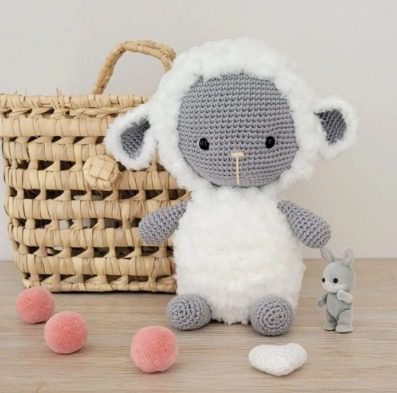
Check this out :Crochet Foxella Fox Girl Doll Amigurumi
Creating a Lasting Wooly Friend
As you complete the final stitches of your amigurumi sheep, take a moment to appreciate what you’ve created. This charming character, with its distinctive texture and sweet expression, represents your crafting journey and the unique skills you’ve developed along the way.
In our world of mass-produced toys and decorations, handmade amigurumi like your bobble stitch sheep stand out as uniquely personal and meaningful. Whether kept as part of your own collection or given as a heartfelt gift, your sheep carries with it the care and creativity you’ve invested in every stitch.
Many crafters find that their textured amigurumi creations become conversation pieces and treasured keepsakes. The distinctive bobble stitch technique makes your sheep not just a toy but a tactile art piece that invites touch and interaction. It’s this combination of visual appeal, craftsmanship, and texture that makes your amigurumi sheep truly special.
Happy crocheting, and may your sheep be the first of many wonderful textured amigurumi creations!


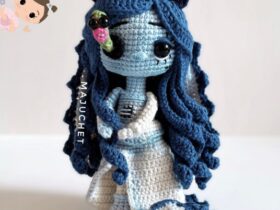
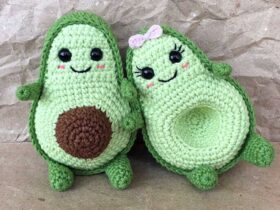
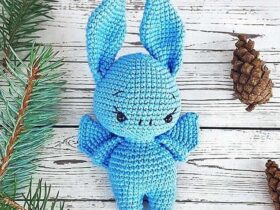
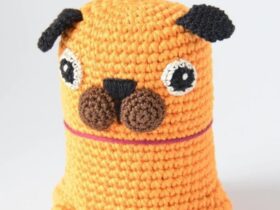
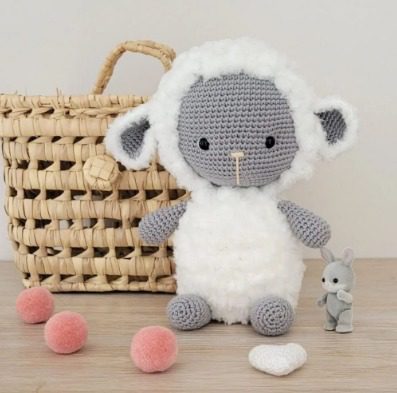
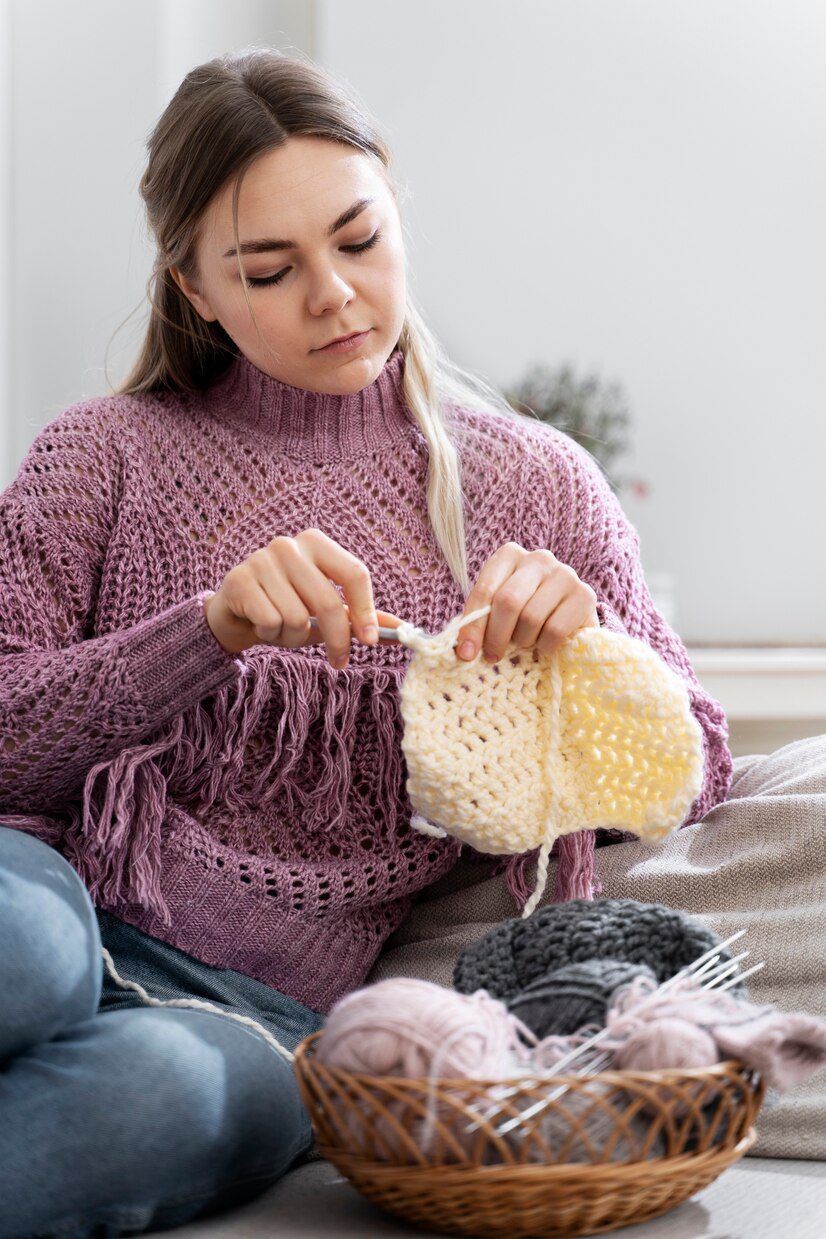

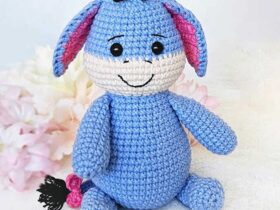
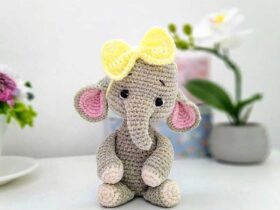
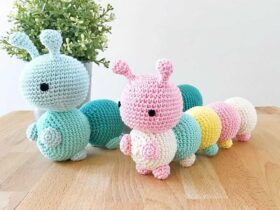
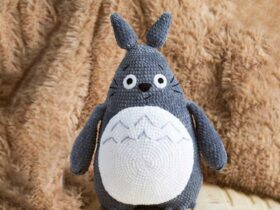
Leave a Reply